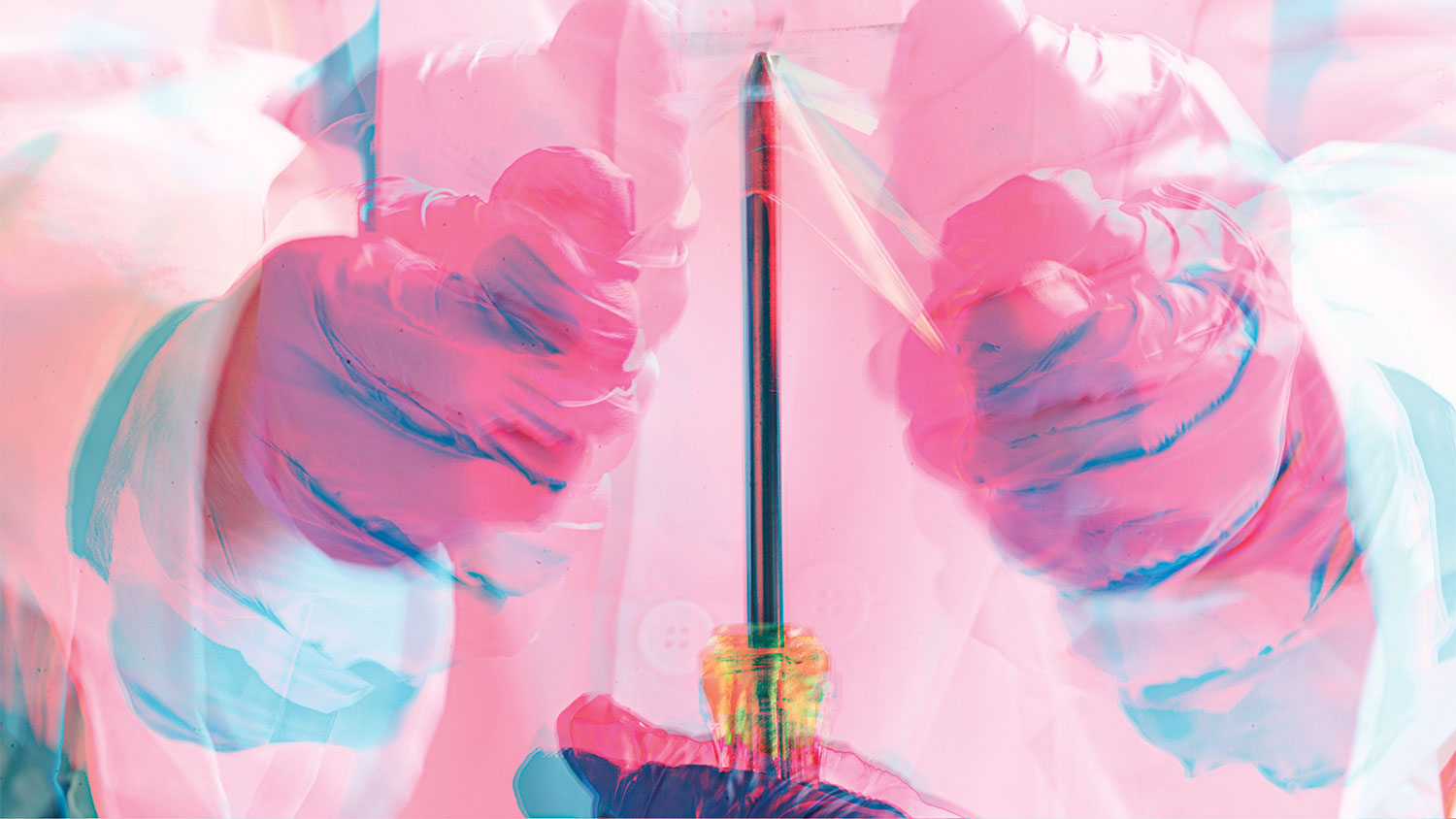Bent but Not Broken
Engineers have developed flexible glass that stretches science and the imagination.

NC State researchers have developed a new type of material combining the strength of a hard plastic water bottle with the elasticity of a contact lens. Dubbed “glassy gels,” the new materials were featured in the prestigious journal Nature. Unique and easily produced, they may eventually be used in everything from 3D printing to windows.
It started with an accidental discovery. Postdoctoral researcher Meixiang Wang was trying to create a stretchy material for use in sensors when she found that adding liquid to a polymer produced a surprisingly hard and flexible material, says Michael Dickey, a chemical and biomolecular engineering professor and a co-author on the paper. “Usually when you put liquid into polymers, when they get wet, they’re kind of squishy, and the material is softer,” Dickey says. “But in this case, it was hard.”
“When we add the liquid, it can stretch five times its original length without breaking, like a rubber band.”
— Michael Dickey
Dickey and others joined the team to further investigate the material’s exact properties and how they form. They found that adding the right amount of a liquid with a particular concentration of ions causes the chains of molecules in plastic to bond together in a way that makes the material both stronger and more flexible. If the molecules in soft plastics are like strands of cooked spaghetti, he says, the electrical charge in the ionic liquid creates a pattern that holds together more like a net, allowing for stretchability. “Normally it would be hard, and if you stretch it, it would just break,” Dickey says. “But when we add the liquid, it can stretch five times its original length without breaking, like a rubber band.”
Dickey says he’s gotten inquiries about using glassy gels in windows, batteries, adhesives and food processing. In 3D printing, the material could be easily formed into a number of products. Unlike most plastics, which must be manufactured, glassy gels are easy to produce — simply mix together the various parts and cure them with heat. They also return to their original shape easily after being stretched and are sticky to the touch.
“It’s not something we set out to make,” Dickey says, “but it does have such unique properties that I’d like to think that it will find some applications.”
Tell Us What You Think
Do you have a personal connection to this story? Did it spark a memory? Want to share your thoughts? Send us a letter, and we may include it in an upcoming issue of NC State magazine.


